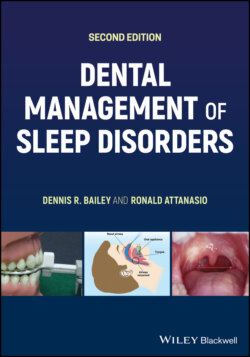Читать книгу Dental Management of Sleep Disorders - Ronald Attanasio - Страница 76
Sleep‐Related Breathing Disorders (SRBDs)
ОглавлениеThis is the category that is most important to the practicing dentist involved in oral appliance therapy. Specifically, attention should be given to obstructive sleep apnea, sleep‐related hypoxemia and isolated symptoms and normal variants. There are five specific disorders:
Obstructive sleep apnea disordersICD‐10‐CM code: G47.33Applies to both adult and pediatric
Central sleep apnea syndromes
The dentist is not likely to encounter central sleep apnea. The one to consider might possibly be central sleep apnea due to a medication or substance. This may be associated with the use of opioids, or when using some other respiratory depressant medication.
Sleep‐related hypoventilation disorders
Sleep‐related hypoxemia disorder ICD‐10‐CM code: G47.36
The dentist is not likely to encounter this specifically. If the patient's blood oxygen is equal to or less than 88% for greater than five minutes, then this may be present and should be further evaluated by a physician as hypoxia has implications that are outside the scope of the dentist.
Isolated symptoms and normal variants
The most commonly encountered condition here is snoring. Despite the fact that an ICD code exists for snoring (R06.83), this is typically not a billable or reimbursable service. The presence of snoring indicates the potential risk for sleep apnea and if present should be evaluated further.
